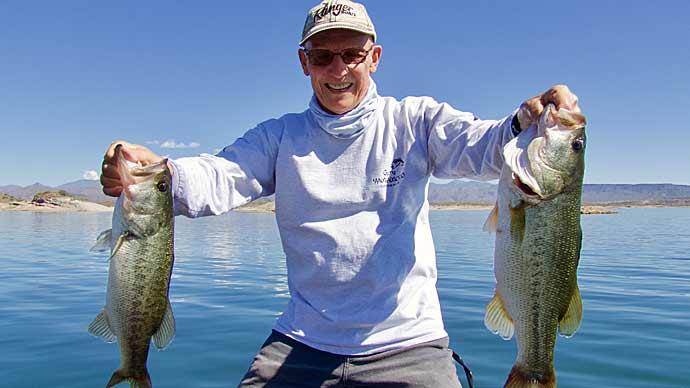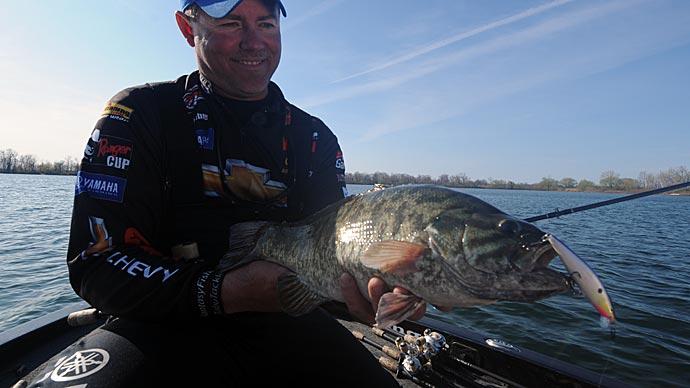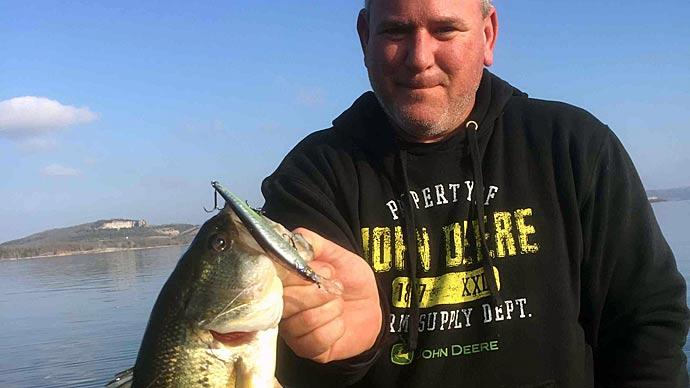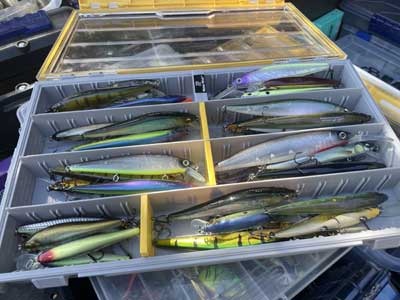
The jerkbait is one of the best bass lures for cold water bass fishing and has been for many years, and they are now considered an effective way to catch bass year-round as more anglers are learning how effective they can be in all bass fishing situations.
With the advancement in technology, nearly all of the jerkbaits on the market are dialed in with precise weighting systems. They are also built to suspend perfectly when at rest. Modifying the lures before fishing them has become less of a part of jerkbait fishing with the improved baits, but there are still some ways to adjust the baits and get the best actions for a specific situation.
Line Diameter Matters
One of the most effective ways to modify the action and diving depth of your jerkbaits is also the simplest: adjusting your line size. Different pound tests and diameters will significantly affect the action and diving depth of crankbaits and jerkbaits.
Many anglers prefer a ten- or 12-pound fluorocarbon line for fishing jerkbaits, but going down to 8-pound or up to 15-pound will significantly impact how deep a bait will dive. Some professional anglers take it a step further and will use a 20-pound test at times to deliberately stunt the diving depth of a jerkbait when fishing shallow water or to keep the bait above submerged grass and other cover.
Instead of just the pound test stated on a spool, the actual line diameter is something to pay close attention to. The diameters vary wildly from brand to brand, and some manufacturers' line is much thicker than a comparable pound test from a different company. Seaguar, for instance, is among the thinnest fluorocarbon of any company and is rated true to breaking strength, and a 12-pound line might be thinner than a 10-pound test from another brand.
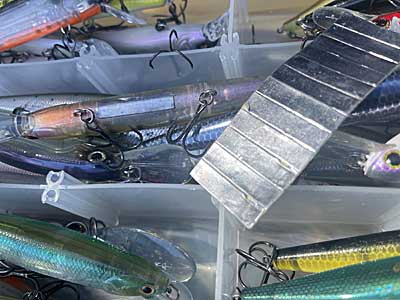
Adding Weight
Most modern jerkbaits are explicitly built to cast great with weight transfer systems, and most are made to suspend perfectly when at rest. The designs take some guesswork out of modifying baits to get them to suspend, but there are still times when modifying jerkbaits helps.
Instead of just suspending at the maximum diving depth, getting the bait to sink slowly can pay big dividends when fishing deeper water. You can achieve this by adding lead strips like the Storm SuspenStrips. They are easy to apply, will change the diving depth, and can be affixed anywhere on the lure. They are also available in a smaller package in the SuspenDots.
Adding them to the front of the lure will cause the bait to rest and fall nose first; conversely, adding them to the back will cause them to fall tail first. Both can be effective at times and will change the bait's action and help the bait mimic dying baitfish.
Modifying Hooks
Like the weight systems on jerkbaits, the hooks used are selected to give the bait a precise action when working the bait. The weight of the hooks is a big part of the bait's performance, and matching the same hook size and gauge will keep the bait working as intended by the manufacturer, but modifying the hooks can help in other ways.
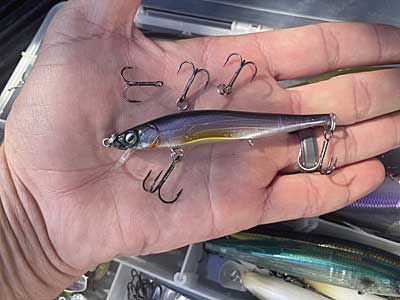
Like adding lead strips, going to a heavier hook will change the movements of the bait and will also cause the bait to sink instead of just suspending. However, it can help and give the bait a different look.
Many jerkbaits have three hooks attached to split rings on the bait. Changing these out for bigger hooks could cause the hooks to foul with each other or your line and change the bait's action. A simple solution that can help increase hookups is using just two hooks. Adding bigger hooks can aid the angler with more bite to catch short striking fish. This is especially helpful on small jerkbaits with three small hooks, where adding two larger hooks will increase your odds of landing fish.
Forward Facing Sonar Jerkbaits
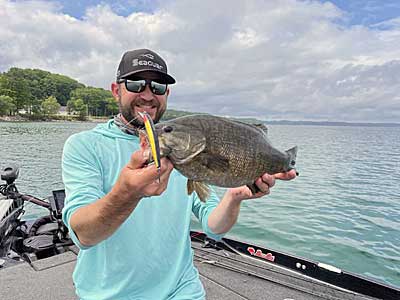
Marine electronics are essential in all forms of bass fishing but can be very helpful when fishing with jerkbaits. Standard 2D imaging is excellent for locating bass and baitfish, two critical ingredients to jerkbait success. But, forward-facing sonar has hugely impacted how jerkbaits are used. It helps anglers gauge the interest of fish they see on their screen and modify their retrieves to get the fish to bite.
Using this technology allows you to view your bait working through the water column and give you an accurate number for how deep your lure is diving with the modifications listed above. It can also be eye-opening to see how a bait acts with each rod twitch. It will also allow you to see the importance of casting distance on the diving depth of a jerkbait. But, most importantly, it will let you see how fish react to each movement.
Fish will often follow jerkbaits without striking them and making adjustments with stronger or lighter rod actions, and the speed of each jerk can get fish triggered enough to bite. This is a fun way to learn about fish behavior and make you a better jerkbait angler.
Jerkbaits are excellent lures for catching bass in all seasons and should be a staple in bass anglers' arsenals every month of the year. This season, making minor adjustments to the lure and your line size can get you more bites with a jerkbait.


